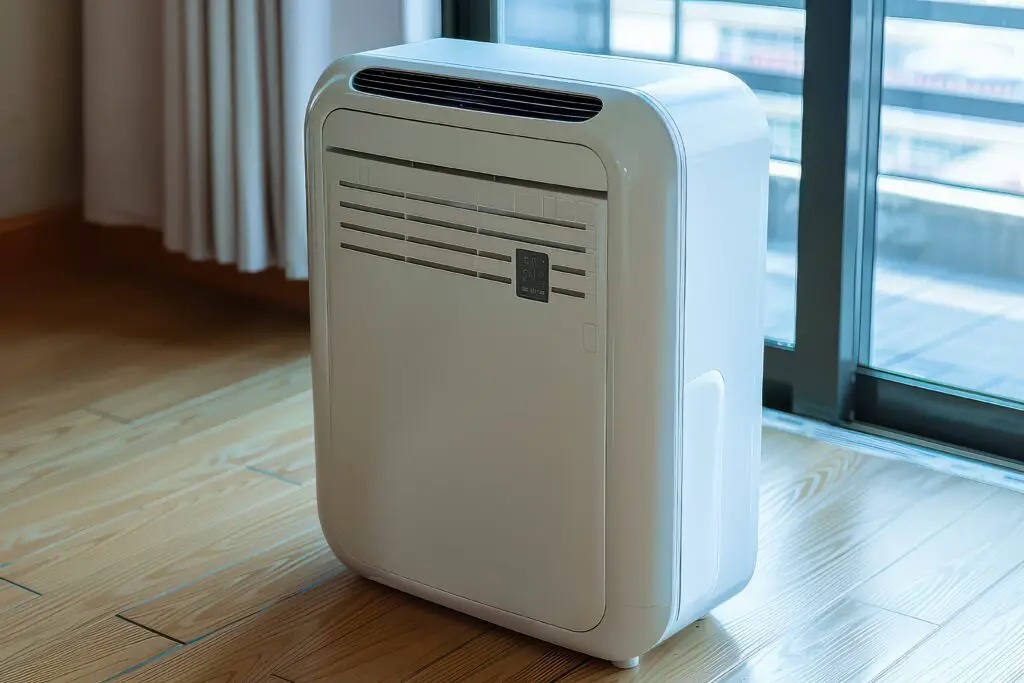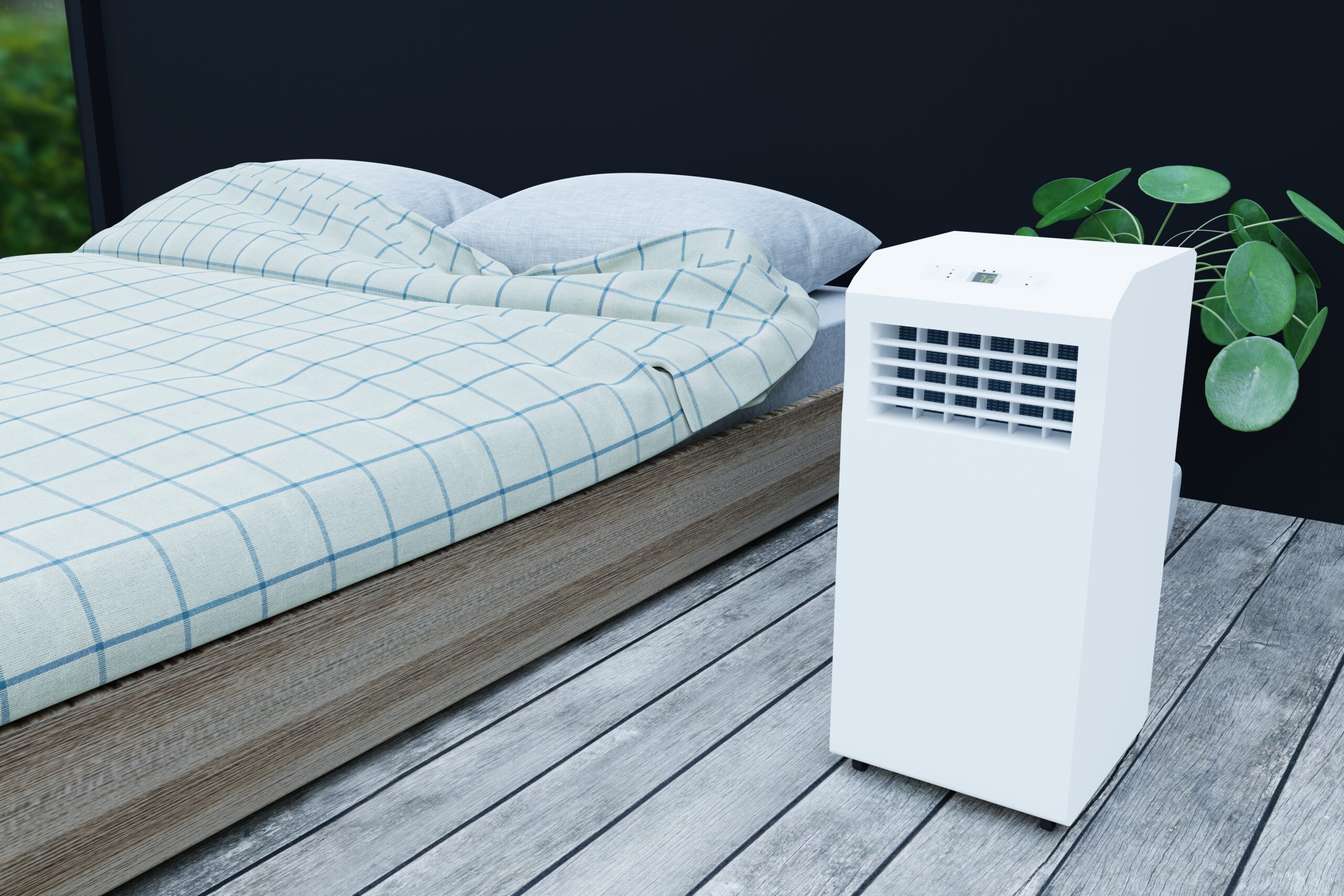Ever found yourself sweating on a sweltering summer day, wishing for a cool breeze? Perhaps you’ve considered investing in a portable air conditioner, but you’re unsure if it’s worth it. This article is for you.
We’ll investigate into the world of portable air conditioners, exploring their benefits and drawbacks. By the end, you’ll have the knowledge to decide if they’re the right fit for your cooling needs. So, let’s beat the heat together and find out if portable air conditioners truly live up to the hype.
Understanding Portable Air Conditioners

Let’s dive deeper into the subject of portable air conditioners. They’re an alternative option to traditional, fixed AC units. But what exactly are they, and how do they work?
What Are Portable Air Conditioners?
A portable air conditioner, unlike its fixed counterpart, is a mobile conditioning system. It’s an entire air conditioning unit condensed into one small, versatile package. Think of it akin to your large, household refrigerator but with the mobility of your personal portable cooler. It provides cooling services that you can move from one place to another, be it different rooms, even taking it along on a camping trip!
How Do They Work?
Portable air conditioners operate on the same principles as traditional air conditioning systems. They remove warm air and moisture from an enclosed area and replace it with cooled, dehumidified air. The primary difference lies in the size and mobility.
So, how exactly does this process occur? It’s relatively simple! The portable air conditioner first sucks in warm room air. This air then passes over cooling coils, dropping its temperature. During this process, the unit’s fan blows back the cooled air into your room. Meanwhile, the moisture extracted from the initial warm air gets expelled from the unit through an exhaust hose, typically installed in a window.
Advantages of Portable Air Conditioners
Portable air conditioners provide distinct advantages over traditional AC units, including mobility, cost-effectiveness, and suitability for small spaces.
Mobility and Ease of Installation
One of the primary advantages of portable air conditioners lies in their mobility. Unlike traditional AC units, which get installed in a fixed position, portable air conditioners offer the flexibility to move them around as required. If it’s hot in your living room during the day but your bedroom reaches tropical temperatures at night, no problem—a portable air conditioner can follow you from room to room. It’s like having a personal cool breeze on wheels. Installation? It’s a breeze. Typically, a portable air conditioner needs a simple setup that includes an exhaust hose to the outside, often through a window. You’ve got no need for heavy lifting, specialized tools, or a technician’s visit.
Cost-Effectiveness
The price point of portable air conditioners makes them an attractive option. Compare the typical costs of a central air conditioning system or even a window unit to a portable air conditioner, and you’ll see the difference. The latter gives the same cooling-power, but without burning a hole in your pocket. Plus, energy efficiency comes into play—cool the rooms you’re using, not the whole house. Running a portable air conditioner can save energy and, by extension, reduce electricity bills.
Ideal for Small Spaces
Let’s face it; not every space is designed with central air conditioning in mind. Studio apartments, small offices, or attic rooms often struggle with effective cooling due to their size or layout. In these cases, a portable air conditioner can be just the ticket. Compact in size and easy to position, portable air conditioners can bring that refreshing chill into spaces where traditional AC systems would fear to tread.
Challenges with Portable Air Conditioners

Even though their numerous perks, portable air conditioners aren’t without some drawbacks. It’s crucial that you’re aware of these challenges before making a purchasing decision.
Efficiency Compared to Other Models
Firstly, portable air conditioners often lag behind their counterparts in terms of efficiency. For instance, the average Energy Efficiency Ratio (EER) of a portable air conditioner stands around 8 to 10, while window units possess an EER of 10 to 12. It implies that you might need more energy to cool the same space with a portable air conditioner as opposed to a window one.
Noise Levels
Another challenge is the noise level. Portable air conditioners, in general, operate at a higher decibel level compared to other models. A typical unit registers around 50 to 60 decibels, nearly equivalent to a conversation at home or background music. In contrast, central systems and window units are considerably quieter, with noise levels generally under 50 decibels.
Maintenance Requirements
Finally, portable air conditioners require regular maintenance. They collect moisture that needs to be manually emptied from a tray or tank, unlike central or window units that expel it outside through a drainage system. By skipping maintenance, you risk not only the performance of your unit but also potential mould growth – which could harm your health.
Comparing Portable Air Conditioners to Other Types
This section delves into the comparison between portable air conditioners and other types, providing a balanced view to help you make an well-informed choice.
Portable vs Central Air Conditioning
Portable air conditioners hold their own against central air conditioning systems in several ways. For instance, portability allows these systems to cool specific areas, contributing to energy efficiency. But, central air conditioners serve larger spaces and are better for homes of considerable size. But, take into account the potentially higher installation costs and energy bills associated with these extensive systems.
In terms of operational noise, portable units can be louder, given their compact size and proximity. Central air conditioning systems, with their main components installed externally, cause less noise inside the house. But, maintenance on a central air conditioning system generally requires professional support while portable units’ upkeep might be manageable with a do-it-yourself approach.
Portable vs Window Units
Comparing portable air conditioners to window units, the former have the advantage of being easily moved between rooms. But, the latter are generally more efficient in terms of cooling ability. Window units are confined to the room where they’re installed, but they tend to cool rooms more quickly.
Besides, the installation process for window units might deter some consumers because it can be slightly complex and may require certain window dimensions. On the other hand, portable air conditioners offer a simpler setup – often requiring nothing more than an available window for the exhaust hose.
Looking at the noise level, most users find that window units run more quietly than portable ones. But, the ease of maintenance for both units is comparable, with regular filter cleaning and occasional servicing recommended for optimal performance.
Remember, each type of air conditioner has its strengths and trade-offs. Reflect on what your space and lifestyle require to make the most appropriate choice.
User Experiences and Reviews
Now that you’re aware of the various aspects of portable air conditioners, it’s time to investigate into actual experiences and reviews from users. Real-life accounts provide invaluable insights for potential buyers.
Positive Feedback from Users
Aligned with the mobility advantage, users appreciate the ease of installation and mobility of portable air conditioners. No professional help, no heavy-lifting involved. Simply unbox, set up and start experiencing the cooling effects.
Many have also lauded the cost-effectiveness of these units. Electricity bills didn’t skyrocket. In fact, users noticed a relative reduction in electricity usage, particularly in small rooms or specific areas that required cooling, as opposed to cooling your whole home.
Another noteworthy advantage, as pointed out by users, is that portable air conditioners can double as dehumidifiers. This function helps control humidity levels, important for damp climate conditions, ensuring a comfortable living environment, not just a cool one.
Common Complaints
While portable air conditioners come with a set of pros, user reviews aren’t devoid of complaints.
Noise is a common issue highlighted. The units tend to be louder than their window counterparts, potentially becoming a nuisance, especially during quiet night-time hours.
Users have also noted less cooling efficiency. Even though portable units excel in localised cooling, they might not perform up to the mark during intense summer heat or in larger spaces. In such scenarios, users have found the cooling effect inadequate.
Finally, frequent drainage has been a bane for some users, especially in highly humid conditions. Though most units come with an auto-evaporation system, in extreme cases, you may need to manually drain the collected moisture, which can be time-consuming.
In sum, as per user experiences and reviews, portable air conditioners come with their share of highs and lows. But, the key is to choose one based on your purpose, space requirements, and individual living conditions. They’re not one-size-fits-all, but they might just be the perfect fit for your specific needs.
Conclusion
So, you’ve seen the ups and downs of portable air conditioners. They’re mobile, cost-effective, and perfect for those tiny nooks and crannies. But, they’re not as efficient as other types and can be a bit noisy. Your living conditions and personal needs are the deciding factors here. If you’re after a simple, movable cooling solution that won’t expensive, they’re a great choice. But, if you’re dealing with larger spaces or intense heat, you might want to consider other options. Remember, every air conditioning system has its pros and cons. It’s about weighing them up and deciding what’s right for you.
